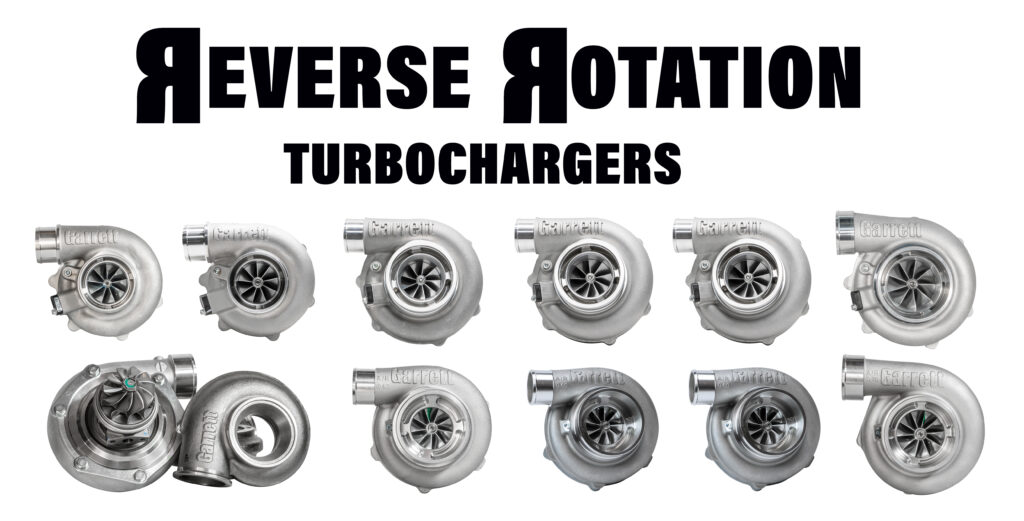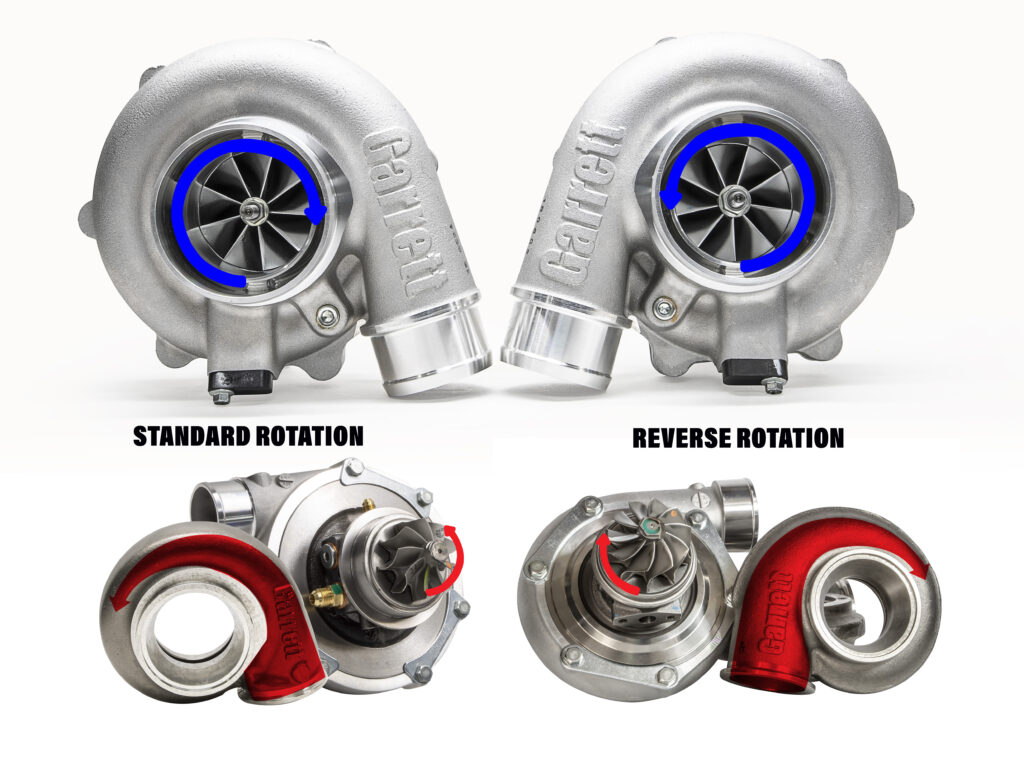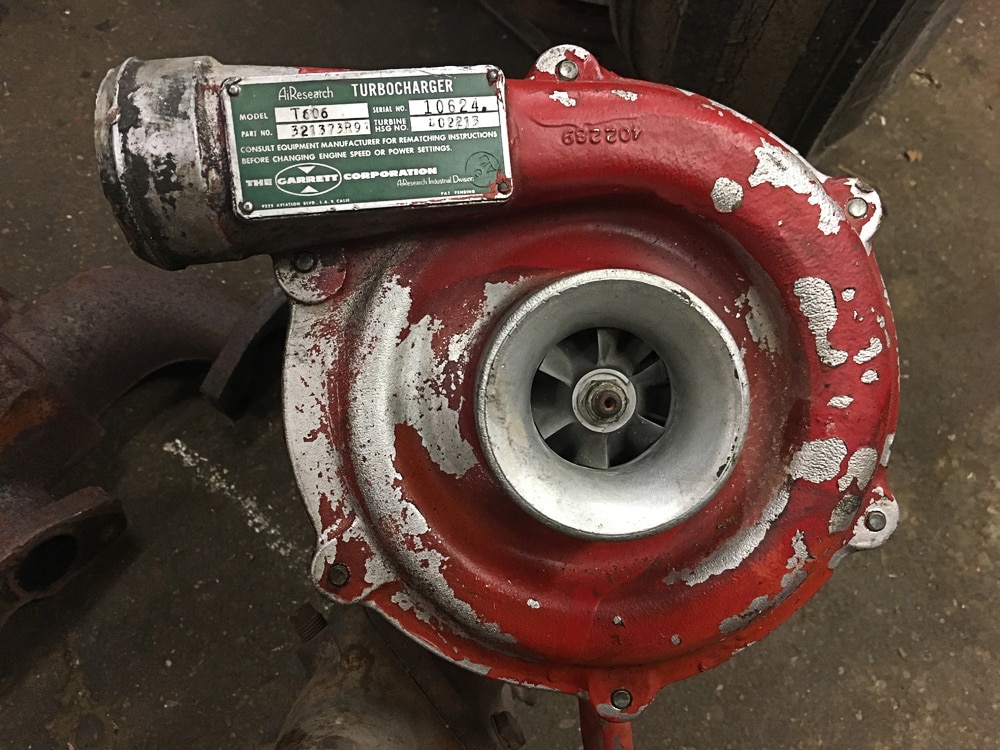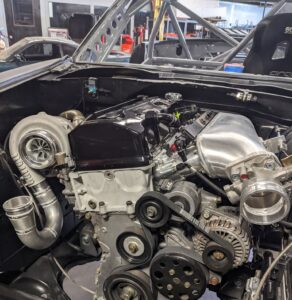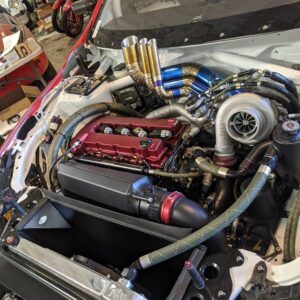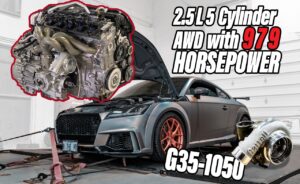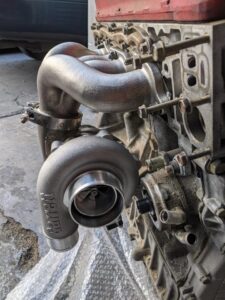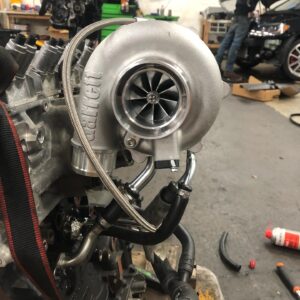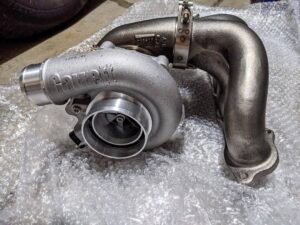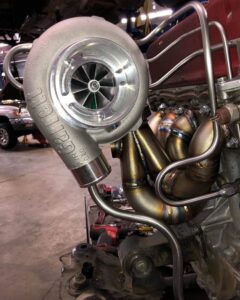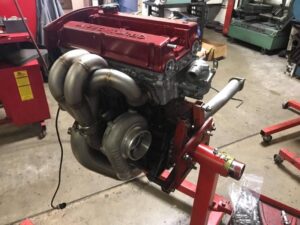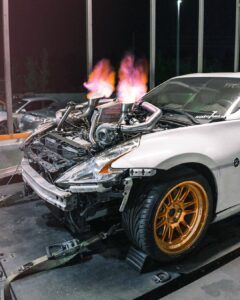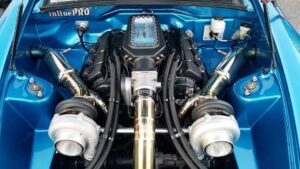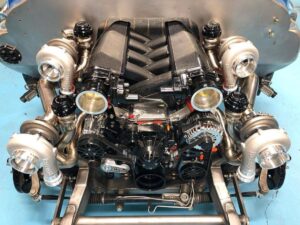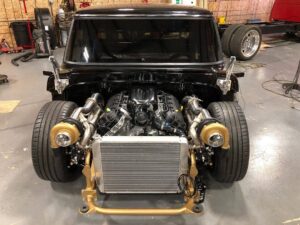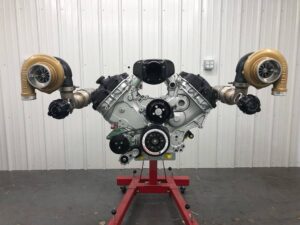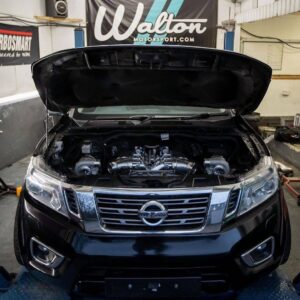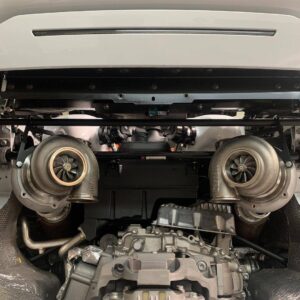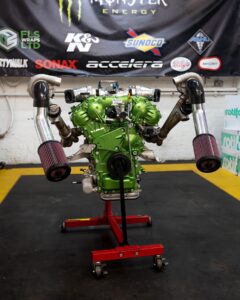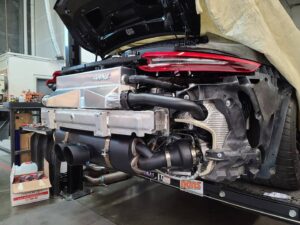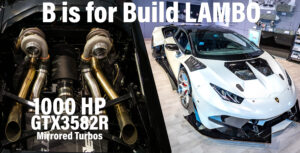
Reverse Rotation Turbochargers: A Unique Performance Configuration For Single and Twin Turbo Applications shared from Garrett - Advancing Motion
Reverse rotation, mirrored turbos, symmetrical turbos, mirror image turbos are the many names that identify this counter clockwise rotating turbo configuration. Truth be told, there’s nothing uber special about them when compared to their standard rotation counterparts. However, the only parts they share are the bearing cartridge and some bolts and clamps. Today we will look at the reverse rotation product line from Garrett and see what sizes and specs are available as well as give you some insight into the different application types that use these products.
The reverse rotation turbo is a mirrored version of the standard rotation turbo. This means a different compressor housing, a different compressor and turbine wheel shaft assembly, and a different turbine housing to make it all work. Exhaust air must enter the turbine housing from the opposite side to drive the shaft wheel assembly in a counterclockwise rotation. From a front view, the compressor wheel rotates counterclockwise and the air exits the compressor housing from the left side. From an engineering point of view, this does not have any effect on performance, it’s purely aesthetical.
Origin Of Reverse Rotation Turbochargers
Why would Garrett offer these configurations? In early times, customers had packaging requirements that required the compressor outlet to be on the left side and the solution was to engineer a reverse rotation turbo. After all, Garrett is an engineering company with expertise in turbo technology and we engineer and manufacture boosting solutions for customers around the world. The turbo in the image below (T606) was manufactured in 1958 under the Garrett AiResearch nameplate and is one of the early reverse rotation products.
Fast forward to recent times where the performance industry is booming with car shows, races, and expert vehicle builders showcasing hundred-thousand dollar builds, the demand for reverse rotation turbochargers increased for the performance enthusiast. In 2016, Garrett released the GTX Gen II reverse rotation line and in 2019 expanded that product range to the new G Series lineup with advanced aero. There are now eleven reverse rotation turbo models available in the Garrett performance product range. In the chart below, you can see the different models that are offered, along with the horsepower and displacement ranges, compressor and turbine specs, and available turbine housings. 1.4L – 5.5L engine displacement range and up to 1050 horsepower, the Garrett Reverse Rotation portfolio can support almost any engine combination and horsepower requirements.
| Reverse Rotation Turbochargers | |||||||||||
|---|---|---|---|---|---|---|---|---|---|---|---|
| Garrett Series | Displacement Range | Horsepower Range | Compressor Inducer | Compressor Exducer | Turbine Inducer | Turbine Exducer | Turbine Inlet | Turbine A/R | |||
| G25-550 | 1.4L – 3.0L | 300 – 550 | 48mm | 60mm | 54mm | 49mm | V-Band | 0.72 | 0.92 | ||
| G25-660 | 1.4L – 3.0L | 350 – 660 | 54mm | 67mm | 54mm | 49mm | V-Band | 0.72 | 0.92 | ||
| G30-660 | 2.0L – 3.5L | 350 – 660 | 54mm | 67mm | 60mm | 55mm | V-Band | 0.83 | 1.01 | 1.21 | |
| G30-770 | 2.0L – 3.5L | 475 – 770 | 58mm | 71mm | 60mm | 55mm | V-Band | 0.83 | 1.01 | 1.21 | |
| G30-900 | 2.0L – 3.5L | 550 – 900 | 62mm | 76mm | 60mm | 55mm | V-Band | 0.83 | 1.01 | 1.21 | |
| G35-900 | 2.0L – 5.5L | 550 – 900 | 62mm | 76mm | 68mm | 62mm | V-Band | 0.83 | 1.01 | 1.21 | |
| G35-1050 | 2.0L – 5.5L | 700 – 1050 | 68mm | 84mm | 68mm | 62mm | V-Band | 0.83 | 1.01 | 1.21 | |
| GTX3071R Gen II | 1.8L – 3.0L | 340 – 675 | 54mm | 71mm | 60mm | 55mm | V-Band | 0.61 | 0.83 | 1.01 | |
| GTX3076R Gen II | 1.8L – 3.0L | 400 – 750 | 58mm | 76mm | 60mm | 55mm | V-Band | 0.61 | 0.83 | 1.01 | |
| GTX3576R Gen II | 2.0L – 4.5L | 400 – 750 | 58mm | 76mm | 68mm | 62mm | V-Band | 0.61 | 0.83 | 1.01 | |
| GTX3582R Gen II | 2.0L – 4.5L | 450 – 900 | 66mm | 82mm | 68mm | 62mm | V-Band | 0.61 | 0.83 | 1.01 | |
Single Reverse Rotation Turbo Applications
Since 2016 we have seen the Garrett reverse rotation product line used on many different engine types and applications. Single turbo applications found using reverse turbos are the Mitsubishi 4G63, and the 4B11, the 2.5L Audi CEPA, 2.0L MQB VW/ Audi Gen 3, and Honda 2.0L F20 to name a few. Engine packaging and available space is a common factor in most turbo builds so how the exhaust manifold is fabricated, where the intercooler sits, and how the piping is routed all come into consideration when selecting a turbo.
- Project Import F24 2.4L Pikes Peak race car
- Evo X 4B11 Engine GTX3582R Gen II
- Audi TT CEPA Engine
- F20 Honda Engine G25-660
- 2.0L MQB Gen 3 VW/Audi A2B Motorsports
- G25-660 Reverse Rotation
- Evo 8 / 9 4G63 Engine
Twin / Multi Turbo Symmetrical Applications
When paired with a standard rotation turbo, reverse rotation turbos offer builders and enthusiasts a wide range of options for creating equal length twin turbo systems. In the case of performance, air flow is critical to maintaining system stability and having equal length runners is one way to accomplish that. Aesthetical beauty is commonly the main factor when combining a standard and reverse rotation turbo together in one system. In the images below, you can see many different engine configurations utilizing both types of turbos to create the perfect turbo system. From exotics like the Lamborghini and Porsche, to modern imports like the S2000 and 370Z, and hot rods and muscle cars alike, turbochargers offer enthusiasts and kit builders many solutions to create their own masterpieces.
- Adam LZ’s Zeroy 370Z
- Schmuck Built S2000
- Grind Hard Garage Chevy Cameo
- Jacks Speed Shop F100
- Jacks Speed Shop Coyote Powerplant
- Haltech V12 LS Engine
- Fuel Tech C8 Corvette G35-900 Turbochargers
- Steve Baggsy Nissan Navara
- CFI Design Lamborghini
- Rampage Fabrication Porsche 991 GT3 G25-550
- B Is For Build LS Powered Lamborghini
- Feras Qartoumys 7 time record holding Time Attack Corvette
